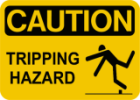

James 5:14-
Is any one of you sick? He should call the elders of the church to
pray over him
and anoint him with oil in the name of the Lord.
And the prayer offered
in faith will make the sick person well;
the Lord will raise him up. If he has sinned,
he will be forgiven.
(NIV)
There are likely very few people who claim the designation "Christian" who do not believe that God can and does heal people miraculously on occasion. And reports of such healings are not confined to religious publications. Secular publications such as Reader's Digest or The National Enquirer occasionally contain stories of amazing recoveries from sickness or injury which even medical doctors use the term "miracle" to describe.
The Bible is absolutely clear that God can heal, has healed, and will heal individuals at times. Thus the questions and concerns that will be addressed in this profile of the Field Guide are not directed at God's ability or willingness to intervene in the health of individuals at times. Rather the questions and concerns relate to specific claims by teachers and evangelists and groups to have a special calling from God to in some way "dispense" His healing through their own ministry.
This role of intermediary between the individual seeking healing and God is not the same as that noted in the passage from James above. James specifically directs the individual believer to contact the local "elders" in his own local congregation of fellow believers, those who are part of his own spiritual "family," and to request that they come and "anoint" him. There is no indication in this passage of a specific "gift of healing" that will be held by one or more of those elders which will be brought into play. The issue is fellowship, prayer, and faith.
The Bible also is clear that the ministry of both Jesus and the Apostles was "confirmed" by a number of "miraculous signs," including in particular many physical healings done in public. These healings at times both drew attention to the preaching done by these men, and then provided a confirmation of the "credentials" of the speaker because he was able to be the instrument of such notable miracles.

The Claims
In the Healing Ministries Movement, the local church is totally by-
The setting for this transaction is often called a "Healing Crusade," or a "Healing Revival." This is a public meeting, sometimes with those in attendance numbering into the thousands or tens of thousands, led by a religious figure believed by most in attendance to have a special "gift of healing" or "anointing" from God. Sometimes the element of healing is used as only one portion of a program particularly designed to "preach the Gospel" to the "unsaved." But it is perhaps more typical for the claims of healing to be the almost exclusive focus of the meetings, with very little Biblical teaching or preaching available.
The "healing evangelist," as he or she is often styled, may line people seeking healing up at the front of the meeting facility, and then go down the row touching each one and declaring that they are now healed. (Some may fall over backward as he touches them, in an evident "swoon" which is referred to as being "slain in the spirit".) This style of meeting has been typical for a hundred years or more.
A more recent development (used by a handful of ministers as early as the 1940s, but even more typical today) has been the exercise by some evangelists of an alleged gift of "a word of knowledge" whereby the Lord has allegedly revealed the malady of a specific member of the audience with whom the evangelist had no previous contact. Thus that person is "called out" of the audience to come to the front to "receive their healing." Sometimes the evangelist will use a designation such as "someone in the back row with a heart problem," sometimes a more specific designation such as "the woman in the fourth row in the red dress.”
But in more recent decades, a different method is used by some healing evangelists. In this procedure, the audience is primed at the beginning of the meeting to "expect their miracle tonight." Then, after an extended period of singing and exhortation, audience members are invited to come forward if they believe that they have miraculously received their healing while in their seats. They are then brought on stage one at a time to give their "testimony" of healing to the evangelist.
With the advent of television, the "audience" of the healing evangelist is also expanded. And thus another method has been adopted by some. As in the "calling out" done in some crusades, they will declare that they have a "word from the Lord" that someone in the television audience has a particular malady. They assure that person that the Lord is indeed healing them at that moment, and they should call the ministry and confirm that they received the healing.
Although specific statistics would be hard to come by of what percentage of the audience
at any given "crusade" consists of committed believers, and what percentage are guests
or curiosity seekers, it would likely not be an exaggeration to speculate that the
vast majority of any given audience would describe themselves as "born again believers."
The parking lot of many a crusade would contain many buses belonging to or chartered
by area churches, bringing groups of their own members to the meetings. And many
more in attendance are likely regular supporters or followers of the ministry of
the evangelist, including watching him on television, getting his newsletters and
magazines, and purchasing his books. Although the larger Ministries, such as those
by charismatic super-
Theologies of healing
Within the healing crusade movement of the past one hundred years, there have been a number of approaches to just what the "underlying theology" of healing should be.
1. For some, supernatural healing is viewed as an evidence of a "restoration of the spiritual gifts" of the first century. Thus the emphasis is on the fact that the individual healing evangelist has a special anointing from God and is using it to benefit others.
2. In another approach to healing, it is declared that the promise of healing for all believers is "in the Atonement." In other words, it is alleged that Jesus' suffering and death accomplished two things: the spiritual redemption of individuals for all eternity, and the conquering of physical ailments in this life. This concept is usually based on one scripture:
1 Pet 2:21-
For even hereunto were ye called: because Christ also suffered for us, leaving us
an example, that ye should follow his steps:
Who did no sin, neither was guile found
in his mouth:
Who, when he was reviled, reviled not again; when he suffered, he threatened
not; but committed himself to him that judgeth righteously:
Who his own self bare
our sins in his own body on the tree, that we, being dead to sins, should live unto
righteousness: **by whose stripes ye were healed.**
Many groups who believe in following the precept of James 5:14 and "calling for the elders" to anoint the sick also use this scripture to explain why the believer can expect healing. But within the Healing Ministries Movement, the emphasis is shifted from calling for the elders to some other "act of faith" which will "release" a guaranteed healing for the person with physical afflictions, whether illness, injury, or congenital deformity. If a healing evangelist will be nearby at a crusade in the near future, the afflicted one is encouraged to attend. The implication is that the likelihood of healing is greater in the actual presence of the evangelist. However, in recent years many such evangelists also have their own television programs. And they use a number of incentives for the afflicted to contact them by mail in order to "receive their healing." Examples of some of these incentives will be given in the Examination section below.
3. Another approach to healing is to view it as a "tool" provided by God to the minister for "power evangelism." In this approach, healing of individuals in an audience is viewed as a "sign gift" which can validate in the minds of the audience the ministry of the evangelist.
In each of these approaches, the actual "level of faith" of the person afflicted
may be viewed as playing an important a part in whether they are healed. But particularly
in approach number 2, there is a definite emphasis on a connection between level
of faith and expectation of healing-
The result of this approach is obvious. If a person truly seems to get better after contact with the evangelist (either in person or by letter), they will likely attribute their improvement to that evangelist's ministry. But if they do not get better, or improve only temporarily, they are encouraged to attribute the failure to their own "level of faith." Thus there is no objective standard whereby to evaluate the "success rate" of the evangelist. He or she is held to no standard of performance at all. They get to claim all successes, and wash their hands of all failures! There is no system of accountability for the healing evangelist.
![]()
The Allure
It is sometimes noted by those opposed to the very concept of "supernatural healing"
that medical science has progressed to such an extent that we no longer "need" the
kind of divine intervention that was at times present to heal in the first century.
They view supernatural healing as a sort of "stop-
It is difficult to understand this perspective-
Thus the allure of the healing evangelist and the Healing Crusade: They offer hope to the hopeless.

Concerns
At first glance, it might seem both heartless and foolish to criticize in any way individuals who offer hope to the hopeless. If just one person is "healed" at a healing crusade, isn't that worth the effort? Why, even if some charlatan, who knows he doesn't have a "gift of healing" at all, comes to town who is only there to bilk the unwary of their offerings in exchange for a a good show, doesn't he do some good by offering a few moments of hope to the hopeless, a bright spot in their drab life?
Field Guide readers are encouraged to consider the documentation and commentary in this profile of the Healing Ministries Movement, and in the profiles provided of a number of prominent healing evangelists of the past and present, and come to their own conclusions regarding the answers to the questions above.
Areas of concern regarding the Healing Ministries Movement:
- In spite of the unending hype that comes via newsletters of the ministries involved
in this movement, in spite of the many "healings" claimed in such newsletters and
on the TV programs of many of these ministries, actual solid documentation establishing
the truth of these claims is almost non-
existent. In spite of the fact that healing ministries have been photographed and captured on motion picture since the 1940s, and videotaped in recent decades, there are no video records available of astounding healings of the type that Jesus performed- - those born blind seeing clearly, those with withered limbs made instantaneously whole. In spite of the many claims, there are no videotapes of tumors visibly shrinking or falling off, or of paraplegics getting up out of wheelchairs.
And as for documentation of the less visible alleged healings such as internal cancer-- A number of sincere researchers have contacted numerous such ministries in the past fifty years and more, attempting to get such documentation, and they have been thwarted at every turn. The reality is that most ministries do not in any way "follow up" on any claims of healing made at their ministry events. They merely "report" them to their supporters. If questioned, they will insist that they, personally, never claim that someone is healed, but rather that they just accept the reports of those who wish to make such a claim.
- In spite of the focus on a few alleged healings at every such crusade, mention is
never made of the hundreds or thousands in attendance who were not healed on any
given night. Many healing evangelists make a point at the beginning of such an evening
to assure their audience that "tonight is the night for YOUR miracle." Is it really
logical to assume that only those who were brought forward to the stage and pronounced
"healed" had "faith" for healing on that night? Many others... sometimes thousands...
may have made extreme efforts to get to such a meeting, obviously because they did
believe that healing would be available. Watching others go forward to claim a healing
should, even just psychologically, give them more hope and confidence. What, then,
are they told when they go home in the same condition as they arrived? They are told
nothing. For they are only one among thousands, and their private, personal anguish
is not evident among the throngs.
- In spite of the occasional claim of outstanding miracles such as a blind person receiving
their sight, most healings claimed at healing Ministries are of such a nature that
they are not "obvious" to the observer. Someone can claim that an internal cancer
was healed, but without an x-
ray, it will be impossible to verify this claim. Someone can claim a pain has left their body, but that cannot be seen either. And in many cases, such claims have nothing to do with an actual healing, but with a temporary alleviation of a symptom that can be attributed to the excitement of the evening. these kinds of maladies? They do not exist. If one accepts the theology mentioned above that healing is "guaranteed in the Atonement," that ought to be healing of every kind of malady. Is it possible that no person at any of the modern healing ministries gatherings with a serious, obvious deformity or such has ever had the level of faith necessary for healing?
The real issue is ... what about the people who came with obvious external maladies-- deformed legs, withered hands, multiple sclerosis, Down's Syndrome? Where are the videotapes of healings of
- In spite of the reality of point 3 above, many healing evangelists continue to imply
to their audiences that they should expect healing of every problem ... at the same
time that they make sure to keep any individual cases of obviously crippled or deformed
people out of range of the cameras capturing the events of the evening. A person
with a slight limp walking with a cane is one thing. They may well toss their cane
aside later in the evening and stride across the stage to the cheers of the audience.
Some people may even get up out of wheelchairs and walk, also to the cheers of the
audience. However, it is well-
documented that a number of prominent healing evangelists have crews which sit people in wheelchairs provided by the crusade itself at the beginning of each service. The person may have a condition which has left them weakened but actually able to walk on their own. Thus the fact that in a situation of excitement a rush of adrenaline would allow them to walk energetically across a stage is not surprising. The audience does not realize that the person was not "wheel chair bound" at all, so this seems like a notable miracle. BUT- - A person with a withered leg, or an orthopedic shoe with a three inch sole is quite another issue at most healing ministry events. They will likely find themselves sitting back in the shadows well out of sight.
- There is an obvious factor of "time and chance" that enters with such methods as
the "word of knowledge" used on the television programs of healing evangelists. The
audience for the most popular programs such as the 700 Club or Trinity Broadcasting's
Praise the Lord are likely in the tens or hundreds of thousands. Thus for someone
on such a program to proclaim that "someone" in the television audience has a hearing
problem, or a sore back, or any other malady, is almost sure to be fact. The maladies
described are usually those most common, and the chances are that hundreds or thousands
might fit the profile. Thus that one of those might have their condition improve
in the time period near the proclamation is not a matter for astonishment.
This is not at all to deny that God can intervene and heal someone who is sincerely seeking such a healing at the same time as the television evangelist is declaring that "someone out there in TV land is being healed this moment." But when such time and chance occurrences are used to "validate" the ministry of the evangelist, and particularly to encourage supporters to send donations, the claims stretch credibility.
- One of the most disturbing aspects of some of the ministries that focus on claims
of healing is the methods and gimmicks they use in mass mailings to their supporters.
Rather than encouraging believers to follow the admonition of James 5:14 if they
are ill, they encourage them to follow some man-
made "faith formula" that will "guarantee" that God will be forced to "give them their healing." Or they will encourage them to become involved in some physical scheme connected to the healing evangelist- - request an anointed cloth, accept a vial of holy oil or holy water, place their hand on a paper outline of the evangelist's hand (or his hand on the TV screen) as a "point of contact," and many, many similar gimmicks. Inevitably, these gimmicks also include an admonition that the one seeking healing (or a "financial miracle" or other type of divine intervention) include with their request the largest "seed faith" donation possible to the ministry.
The New Testament examples of healing by Jesus and the Apostles never included any request for money. In fact, in the one instance that money is mentioned, it is of a crippled man begging money from Peter.
Acts 3:2-
Now a man crippled from birth was being carried to the temple gate called
Beautiful, where he was put every day to beg from those going into the temple courts.
When he saw Peter and John about to enter, he asked them for money.
Peter looked
straight at him, as did John. Then Peter said, "Look at us!"
So the man gave them
his attention, expecting to get something from them.
Then Peter said, "Silver or
gold I do not have, but what I have I give you. In the name of Jesus Christ of Nazareth,
walk."
Taking him by the right hand, he helped him up, and instantly the man's feet
and ankles became strong.
He jumped to his feet and began to walk. Then he went with
them into the temple courts, walking and jumping, and praising God.
(NIV)
There is not one healing evangelist of the past 100 years who has had the ability to tell a man crippled from birth, "walk"... and be absolutely confident that it would happen. There is no hedging by Peter that the man needed "great faith." In fact, the man had no faith at all. He wasn't expecting a healing, and he didn't ask for a healing. And there is no insistence by Peter to the man that he'd better be sure to stay in "positive confession" about his healing or he would lose it.
When Jesus and the Apostles healed people, they stayed healed.
As noted in the introduction to this profile, there is no question that God can heal
miraculously, and that He has done so down through the ages. The question is whether
the grandiose claims of healing crusade ministries can be established as fact, whether
the underlying assumptions of the theology of healing which they promote are Biblical,
whether the methods they use are inspired by the Holy Spirit-

Players
Information regarding some of the influential teachers and evangelists of the past and present in the Healing Ministries Movement are available in other sections of the Field Guide. Click on any of the underlined names below to go to a short profile of the individual, located in the Who's Who Digest. As longer profiles are added, links will be provided on the Who's Who Digest page.

Weblinks
An excellent overview, history, examination, and evaluation of the "Healing in the Atonement" position is contained in an onine article by David W. Cloud titled Is Healing in the Atonement?

Bibliography
The following books contain significant sections with documentation regarding the Healing Ministries Movement and many of the individuals who have been a part of the movement in the past and present.
All are in the webauthor's private collection. Those wishing to do more extensive research on any of the topics covered may find this list useful as a starting point. Most of these books include extensive bibliographies of other books related to their specific topic.
A number of these books are still available new from Amazon.com, and some that are temporarily or even permanently out of print are still available through Amazon.com's used book services. You may use the links after each entry to go directly to the Amazon ordering page for the book in that entry.
Also, many of these, both new and old, may be available to borrow through your local
library via the "Inter-
Charismatic Chaos
John F. MacArthur, Jr.
Zondervan Publishing House, Grand Rapids MI
1992
Counterfeit Revival: Looking for God in All the Wrong Places
Hanegraaff, Hank
Word Publishing, Dallas TX
1997
A Different Gospel (Updated Edition)
McConnell, D.R.
Hendrickson Publishers, Peabody MA
1988, 1995
"A bold and revealing look at the biblical and historical basis of the Word of Faith movement"
The Faith Healers
Randi, James
Prometheus Books, Buffalo NY
1987
The New Charismatics
Moriarty, Michael G.
Zondervan Publishing House, Gr. Rapids MI
1992
Unless otherwise noted, all original material on this Field Guide website
is © 2001-
Careful effort has been made to give credit as clearly as possible for the source of any specific material quoted or ideas extensively adapted from any one resource. Corrections and clarifications regarding citations for any source material are welcome, and will be promptly added to any sections which are found to be inadequately documented as to source.
Return to Top of Page and the Navigation Bar

Healing Ministries
Movement